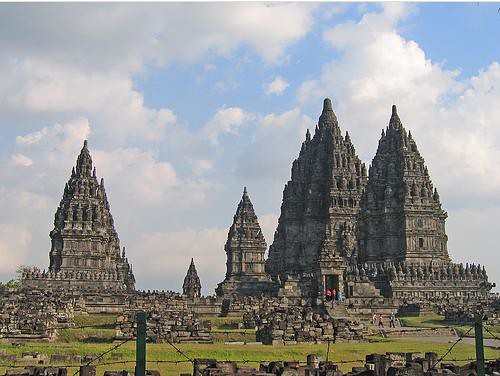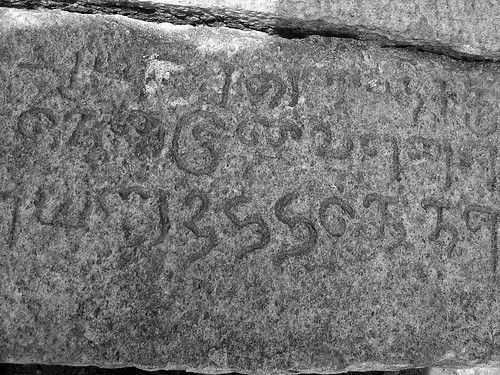Even though the Harappas had a script it still remains undeciphered. Brāhmī, the script in which the Asokan edicts were written is considered to be one of the earliest known scripts in India. While some Indian authorities maintain that it was derived from the Harappan script [13], the popular notion is that it was derived from a Semitic script like the Imperial Aramaic alphabet. Indo-Greek bi-lingual coins usually had the name of the King in Greek on one side and in Brāhmī on the other side.
The script used in the earliest inscriptions in Tamil were in Tamil Brahmi or Tamili script and it varied from the Asokan Brahmi. The Brāhmī script, originally was believed to be bought to South India by Buddhist and Jain monks in the post-Asokan period. Tamil Brahmi scripts dating to 3rd century BCE have been found in the caves of Jain monks in Tamil Nadu. Last year, urns containing human skeletons were found in Adichanallur in Tamil Nadu and those urns dating to 500 BCE were found to have Tamil Brāhmī inscriptions which means that the script reached Tamil Nadu during the time of the Buddha. In fact, there has been evidence that the script reached Sri Lanka also around the same time.
Now in an exciting discovery, Tamil-Brāhmī inscriptions dating to second century AD have been found in pottery in Thailand.
At the request of the archaeologists, Iravatham Mahadevan, an expert in Tamil Epigraphy, has examined the inscription. He has confirmed that the pottery inscription is in Tamil and written in Tamil-Brahmi characters of about the second century AD. Only three letters have survived on the pottery fragment. They read tu Ra o… , possibly part of the Tamil word turavon meaning `monk.’
The presence of the characteristic letter Ra confirms that the language is Tamil and the script is Tamil-Brahmi. It is possible that the inscription recorded the name of a Buddhist monk who travelled to Thailand from Tamil Nadu. This is the earliest Tamil inscription found so far in South East Asia and attests to the maritime contacts of the Tamils with the Far East even in the early centuries AD.
Prof. Richard Salomon of the University of Washington, U.S., an expert in Indian Epigraphy, has made the following comment on the inscription:
“I am happy to hear that the inscription in question is in fact Tamil-Brahmi, as I had suspected. This is important, among other reasons, because it presents a parallel with the situation with Indian inscriptions in Egypt and the Red Sea area. There we find both Tamil-Brahmi inscriptions and standard-Brahmi insciptions; and we now see the same in Vietnam and South-East Asia. This indicates that the overseas trade between India to both the West and the East involved people from the Tamil country and also other regions.” [Tamil-Brahmi inscription on pottery found in Thailand]

